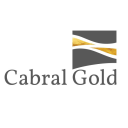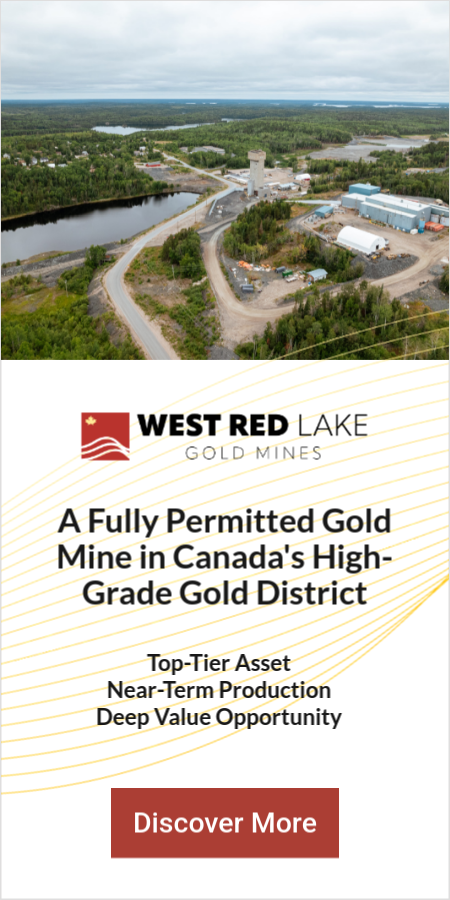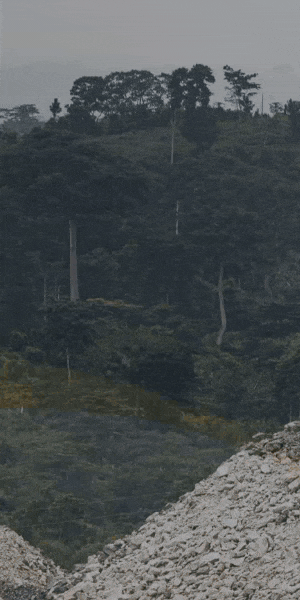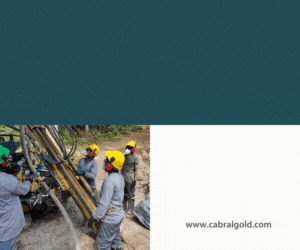Cabral Gold Drills 23m @ 4.7 g/t at PDM & Signals Step-Change in District-Scale Resource Growth Potential

Cabral Gold's 23.3m @ 4.7 g/t intercept at PDM confirms high-grade hard-rock potential beneath oxide resource, backed by $45M financing and 78-139% IRR economics.
- Cabral Gold's new 23.3-meter intercept grading 4.7 grams per tonne gold at the PDM target confirms high-grade hard-rock mineralization beneath the oxide blanket, reinforcing district-scale growth potential.
- The result links with previous high-grade hits, including 1.35 meters at 62 grams per tonne and 1.0 meter at 91.3 grams per tonne, and suggests improving grades at depth, increasing the probability of a future multi-deposit hard-rock mining scenario.
- With US$45 million of construction financing secured, the company is already funded for its near-term oxide heap-leach operation, reducing dilution risk and positioning exploration success as additive upside.
- PDM's oxide footprint has expanded by 50 percent, while underlying structures remain open along strike and at depth, offering a dual pathway to both near-term and long-term resource growth.
- For investors, Cabral's combination of strong economics with internal rates of return ranging from 78 to 139 percent, district-scale upside, and management track record offers differentiated exposure to Brazil's largest historic gold province at a key inflection point.
Why Cabral's New High-Grade Intercept Matters Now
In a gold market characterized by sustained price strength, investor attention has shifted toward developers capable of delivering rapid payback periods alongside meaningful exploration upside. Cabral Gold's latest intercept of 23.3 meters grading 4.7 grams per tonne at its PDM target represents precisely this combination: a material result within one of Brazil's most prolific historical placer provinces, delivered at a moment when the company has secured full construction financing and is advancing toward production.
The significance extends beyond absolute grade. It confirms high-grade intrusive structures beneath the oxide blanket that forms the basis of Cabral's Phase 1 heap-leach operation. For capital-disciplined investors evaluating pre-construction developers, this result validates the thesis that Cuiú Cuiú contains a district-scale hard-rock system capable of supporting multi-decade mining scenarios. The Tapajós region produced an estimated 30 to 50 million ounces of placer gold historically, with Cuiú Cuiú alone accounting for approximately 2 million ounces during the 1980s gold rush.
The geological scale of the opportunity becomes clear when considering the district's geochemical footprint. Chief Executive Officer Alan Carter frames the magnitude of what the company is targeting:
"The sheer size of the gold anomaly at Cuiú Cuiú is one of the largest I have ever seen in my career. We have not just one new discovery, but we have four discoveries here and that's in addition to the two existing gold deposits."
Macro Context: Investor Preference for Low-Capex, High-Return Gold Projects
Institutional and sophisticated retail investors have increasingly prioritized projects that demonstrate rapid payback periods, low all-in sustaining costs, and phased development models that minimize upfront capital exposure. Cabral's heap-leach Phase 1 operation aligns directly with these preferences. The project's all-in sustaining cost of US$1,210 per ounce positions it in the lower half of the global cost curve, while its 10-month payback period at US$2,500 per ounce gold provides rapid capital recovery. The July 2025 Preliminary Feasibility Study demonstrates after-tax internal rates of return of 139 percent at gold prices near US$3,340 per ounce.
Why High-Grade Discoveries Still Move Valuations
The discovery of new high-grade gold systems remains limited globally. Exploration budgets contracted following the 2011 to 2015 commodity downturn, and greenfield discovery rates have not recovered to historical norms. For developers already advancing toward production, the identification of hard-rock ounces beneath existing oxide operations provides strategic and financial advantages: extended mine life, higher net present value per ounce, and optionality for expansion that can be exercised once initial cash flow is established.
The Tapajós Region as an Emerging Institutional Focus
The Tapajós region has gained institutional credibility following GMining's Tocantinzinho mine entering commercial production in September 2024. Tocantinzinho's successful permitting and construction timeline demonstrates that modern gold mining projects can advance through Brazil's regulatory framework. Other producing operations in the Tapajós include Serabi Gold's Palito Mine and Sao Chico deposits, further validating the region's mining potential.
Understanding the District: Cuiú Cuiú's Geological & Historical Advantage
The Tapajós district's geological fertility is supported by decades of production history. During the 1978 to 1995 gold rush, the region produced an estimated 30 million ounces of placer gold, making it the largest recorded gold rush in Brazilian history. Cuiú Cuiú itself produced approximately 2 million ounces from stream sediments, ranking it as one of the richest individual camps within the district.
The historical significance of this placer production provides critical context for understanding the hard-rock potential that underlies the district. Chief Executive Officer Alan Carter emphasizes the unique nature of the Cuiú Cuiú camp:
"The Tapajós district really is unique. Cuiú Cuiú was the largest placer camp during the Tapajós gold rush, and the Tapajós gold rush was not only the largest gold rush in Brazil ever recorded but also the largest gold rush in the world."
Modern exploration has confirmed this placer endowment reflects a substantial hard-rock source. Geophysical surveys and geochemical sampling have identified a continuous 5-kilometer gold-in-soil anomaly linking the Central, PDM, and peripheral discoveries.
The relationship between placer production and underlying hard-rock mineralization has been validated elsewhere in the Tapajós region. Chief Executive Officer Alan Carter draws on the Tocantinzinho precedent to illustrate the potential scale at Cuiú Cuiú:
"For every ounce of placer gold that was recovered during the 1980s at Tocantinzinho, there's 10 ounces in the underlying hard rock which is being mined right now as we speak. If that 1 to 10 ratio holds for Cuiú Cuiú, our project could contain 20 million ounces."
The New PDM Intercept: Why 23.3m @ 4.7 g/t Represents a Step-Change
Drill hole DDH346 intersected 23.3 meters of continuous mineralization grading 4.7 grams per tonne gold within altered intrusive granite beneath the oxide-saprolite contact. This represents the first significant hard-rock intercept at PDM capable of demonstrating both continuity and economic grades over mineable widths. The intercept includes 1.0 meter grading 91.3 grams per tonne gold and 1.1 meters grading 8.1 grams per tonne gold, indicating structurally controlled fluid pathways capable of concentrating gold to bonanza grades.
Continuity with Previous High-Grade Hits
The mineralization encountered in DDH346 links directly to high-grade zones intersected in earlier drill holes, including DDH22 and DDH239. Previous drilling had returned intervals including 1.35 meters at 62 grams per tonne gold, demonstrating that high-grade mineralization forms part of a coherent mineralizing system. Importantly, grades appear to increase at depth, supporting the interpretation that the deeper portions of the intrusive system represent the more proximal, higher-temperature zones of mineralization.

Strategic Implications: How PDM Reinforces the District-Scale Growth Thesis
Recent drilling has expanded PDM's oxide footprint by approximately 50 percent, bringing the total oxide footprint to 0.39 square kilometers. This expanded zone sits outside the current Preliminary Feasibility Study resource base, representing incremental ounces that could be incorporated into future mine plans without requiring modifications to Phase 1 processing infrastructure.
Hard-Rock Upside – Long-Term Asset Quality Enhancement
The confirmation of high-grade hard-rock structures at PDM fundamentally changes the long-term development trajectory for Cuiú Cuiú. While Phase 1 provides near-term cash flow, the identification of deeper primary mineralization creates optionality for a second-stage development scenario involving conventional milling, grinding, and flotation processing.
Cabral's financial strategy centers on using Phase 1 cash flow to fund aggressive exploration rather than relying on dilutive equity financings. Chief Executive Officer Alan Carter outlines the company's approach to scaling the drill program once production commences:
"We expect to significantly expand the exploration program and the number of drills operating. We currently have three on site. Once we achieve cash flow from the starter operation, we'll be self-funding and should not need to raise additional funds through dilutive equity financings."
District-Wide Target Pipeline Strengthens Re-Rating Potential
Cabral's exploration efforts extend beyond PDM. At Mutum, surface trenches have returned 32 meters at 1 gram per tonne gold and 25.5 meters at 0.9 grams per tonne gold. At Machichie Northeast, recent drilling delivered 11 meters at 33 grams per tonne gold, including 4 meters at 89.3 grams per tonne gold, and 12 meters at 27.7 grams per tonne gold. The company currently operates three drill rigs across the property.
Financial & Development Context: A Fully Funded Path to Near-Term Production
Cabral's secured US$45 million gold loan provides full construction financing for Phase 1 and eliminates near-term dilution concerns. The Board of Directors has approved the construction decision, with construction planned for Q3 2025 and first production expected during H2 2026.
Project Economics That Align with Current Market Conditions
Phase 1 economics from the July 2025 Preliminary Feasibility Study remain robust across gold price scenarios. At US$2,500 per ounce gold, the project delivers an after-tax internal rate of return of 78 percent and a net present value at a 5 percent discount rate of US$74 million. At gold prices near US$3,340 per ounce observed in late July 2025, the after-tax internal rate of return expands to 139 percent with a net present value of US$138 million. The project's 10-month payback period ranks among the fastest in the junior gold sector..
Management Execution: Track Record Reduces Development Risk
Chief Executive Officer Alan Carter and his team have achieved five grassroots gold discoveries in Brazil and co-discovered both Tocantinzinho and Coringa, demonstrating proven ability to identify and advance economic deposits.
The team's track record in the Tapajós region provides investors with confidence that they understand the geological characteristics and exploration methodologies required for discovery success in this district. Chief Executive Officer Alan Carter highlights the team's pioneering role in systematic Tapajós exploration:
"We were the first exploration team to systematically look at the Tapajós, and thus far we've discovered more ounces than anyone else in this part of the world."
Carter's professional background includes extensive experience with major mining companies operating in South American jurisdictions. This experience provides operational and cultural fluency critical for project execution in Brazil. Chief Executive Officer Alan Carter describes his international mining experience:
"I spent 13 years of my career working for large mining companies, namely Rio Tinto, Billiton, and BHP, and most of that time I lived and worked in South America, so I'm fluent in both Spanish and Portuguese."
Alignment with Shareholders
Chief Executive Officer Alan Carter has invested C$1.95 million of personal capital into Cabral Gold and remains the company's largest shareholder. Carter's previous exit from Peregrine Metals at C$487 million demonstrates both value creation capability and willingness to execute strategic transactions.
Management alignment with shareholder interests is reinforced by significant insider ownership. Chief Executive Officer Alan Carter emphasizes his personal capital commitment to the company:
"As the founder and CEO of Cabral Gold, I myself have invested $2 million of my own money in the company, and I do not expect anyone to contemplate investment in Cabral unless I'm leading by example. That means I'm aligned with Cabral shareholders."
What the Market Is Missing: Structural Asymmetry in Cabral's Value Proposition
Current market valuation appears to reflect Cabral primarily as an oxide developer advancing a single-asset heap-leach operation toward production. The district-scale hard-rock potential remains underappreciated, creating structural asymmetry between current enterprise value and the geological opportunity represented by over 50 identified targets and emerging high-grade intercepts across multiple deposits.
Funding Reduces Downside, Drilling Expands Upside
The completion of construction financing establishes a valuation floor by removing near-term dilution risk while preserving full exposure to exploration upside. Every additional high-grade intercept expands optionality without requiring equity dilution, creating an asymmetric risk-reward profile favored by institutional investors.
The Investment Thesis for Cabral Gold
- High-grade discoveries drive valuation re-ratings because they are increasingly rare and demonstrate the presence of large mineralizing systems capable of supporting multi-decade production scenarios. Cabral's PDM intercept of 23.3 meters at 4.7 grams per tonne gold, including bonanza-grade sub-intervals, strengthens confidence in deeper hard-rock structures with robust grade profiles that can materially expand long-term project value.
- Low-capex projects are favored in the current capital environment because they deliver rapid payback periods and minimize execution risk during construction and commissioning. Cabral's oxide heap-leach Phase 1 operation offers 10-month payback at US$2,500 per ounce gold and after-tax internal rates of return approaching 140 percent.
- District-scale optionality is limited in today's market because few exploration companies possess large land packages within historically productive gold provinces. With existing NI 43-101 resources of 1.19 million ounces, over 50 identified exploration targets, and active drilling across multiple deposits, Cuiú Cuiú offers rare scalability that cannot be replicated through single-target exploration.
- Fully funded near-term production reduces execution risk by eliminating dilution concerns and demonstrating that institutional lenders have validated project economics through independent due diligence. Cabral's secured US$45 million construction financing provides a clear pathway to cash flow without requiring additional equity raises.
- Strong management track record enhances credibility because teams with proven Brazilian discovery and development history demonstrate understanding of regional geology, regulatory processes, and operational execution. Cabral's management team co-discovered Tocantinzinho and achieved five grassroots gold discoveries in Brazil.
Cabral's High-Grade Intercept Resets Expectations for Cuiú Cuiú
The new 23.3-meter intercept grading 4.7 grams per tonne gold at PDM confirms the presence of high-grade intrusive systems that can materially expand Cuiú Cuiú's long-term value beyond the Phase 1 oxide operation. The continuity of mineralization across multiple drill holes, the presence of bonanza-grade sub-intervals exceeding 90 grams per tonne gold, and the expansion of both oxide and hard-rock targets demonstrate that the district contains a significant mineralizing system capable of supporting multi-decade production scenarios.
Cabral offers a dual benefit: a funded, high-margin starter operation with robust economics and rapid payback, combined with substantial exploration upside across a district-scale land package not yet reflected in current valuation. As the company continues to deliver high-grade intercepts, the market's perception is likely to evolve from single-asset oxide developer to district-scale explorer advancing one of Brazil's most prospective gold districts toward production.
TL;DR
Cabral Gold's latest drilling at its Cuiú Cuiú project in Brazil's Tapajós region has intercepted 23.3 meters grading 4.7 grams per tonne gold at the PDM target, including bonanza-grade intervals of 91.3 grams per tonne gold. This confirms high-grade hard-rock mineralization beneath the oxide blanket that forms the basis of the company's fully funded Phase 1 heap-leach operation. With US$45 million in construction financing secured, the Board has approved construction for Q3 2025, targeting first production in H2 2026. The project delivers after-tax internal rates of return ranging from 78 percent at US$2,500 per ounce gold to 139 percent at current prices, with a rapid 10-month payback period and all-in sustaining costs of US$1,210 per ounce. The new intercept validates district-scale exploration potential across over 50 identified targets, positioning Cabral as both a near-term producer and district-scale explorer in one of Brazil's most prolific historical gold provinces.
FAQs (AI-Generated)
Analyst's Notes




Subscribe to Our Channel
Stay Informed



































